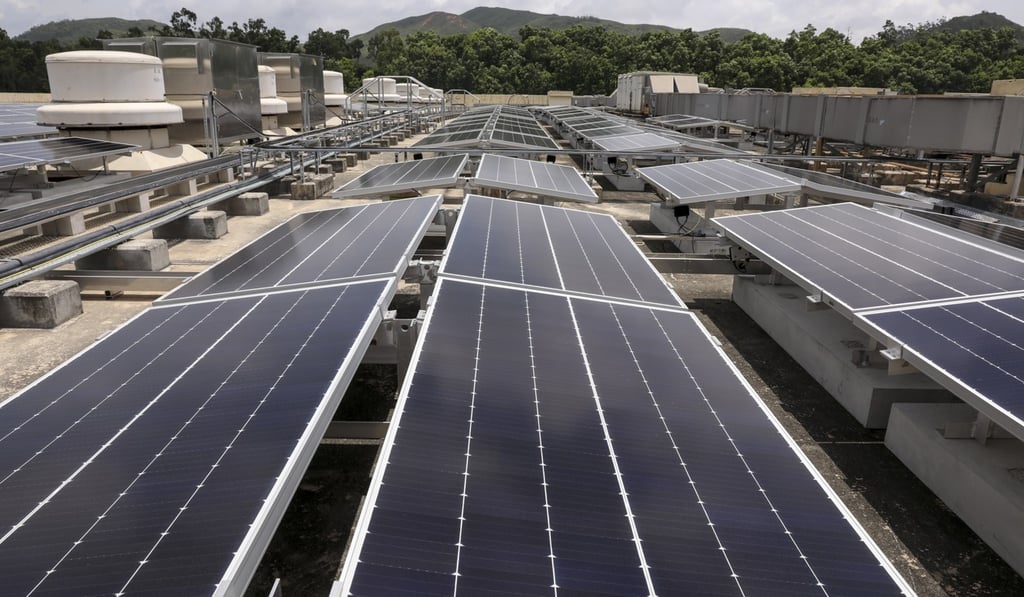Hong Kong’s Disneyland Resort aims to become city’s biggest producer of solar power by 2019 in bid to tackle climate change and reduce carbon emissions
- Resort aims to generate 1.86 MWh solar power a year, equivalent to annual consumption of 564 three-person households
- Power will be sold to CLP Power Hong Kong to encourage use of clean energy for domestic and commercial purposes

Hong Kong Disneyland Resort is installing the city’s largest solar power system, which will generate 70 per cent more clean electricity than the biggest such facility at present.
The theme park on Lantau is setting up more than 4,500 solar cells aiming to produce at least 1.86 megawatts-hour (MWh) of electricity per year, equivalent to the annual electricity consumption of 564 three-person households, senior officials said on Monday.

The solar cells will be placed at the rooftop of its buildings spread over 7,000 square metres (about 75,000 square feet) – the size similar to a standard football field.
The electricity will be sold to CLP Power Hong Kong as part of a feed-in tariff scheme introduced by the government in 2018. The scheme encourages use of renewable energy for domestic and commercial purposes.
The project aims to reduce Disneyland’s carbon emissions by 1.18 million kilograms a year upon completion by December 2019.